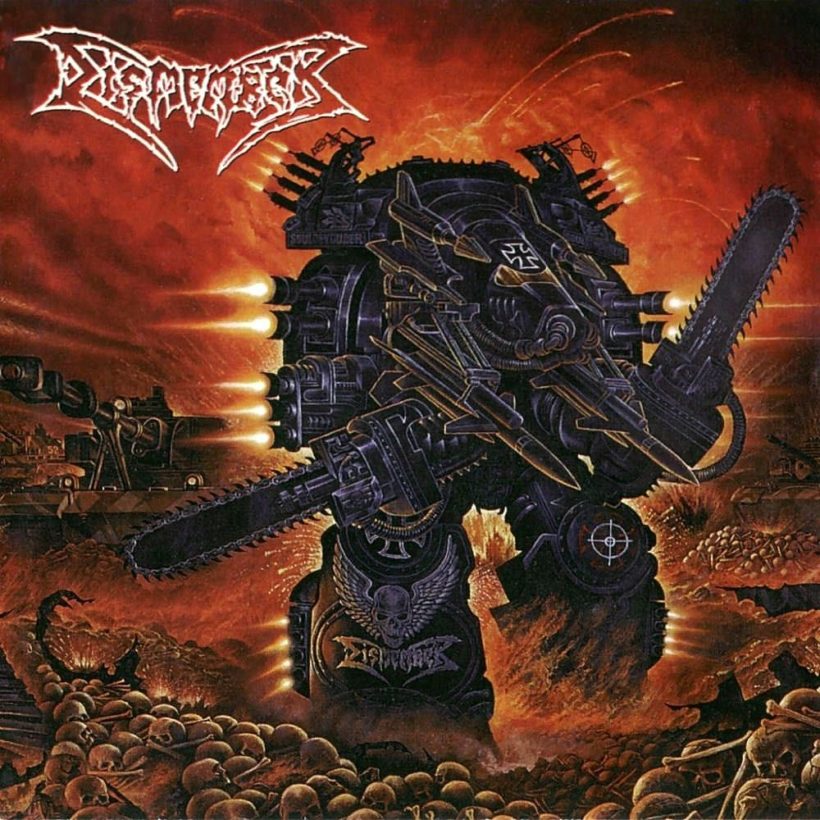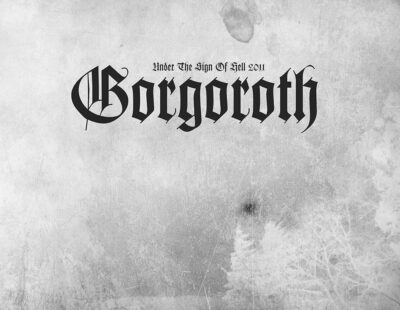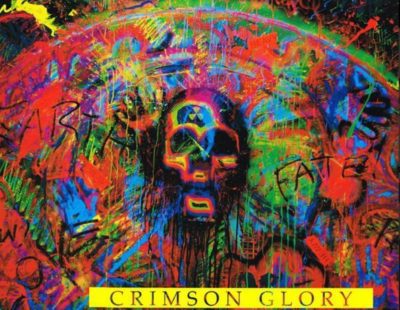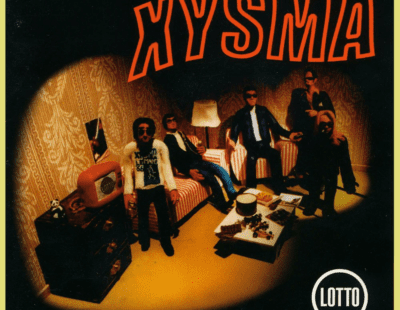
The first Justify Your Shitty Taste I wrote for Decibel covered, in detail, Dissection’s Reinkaos album, Jon Nödtveidt’s divisive, not-at-all-like Storm of the Light’s Bane comeback album. Naturally, Reinkaos, with its taut songwriting, separated fans and critics right down the middle. Some hated it, some loved it. I was in the latter camp, after repeated spins. It stands to reason that Dismember’s third album, Massive Killing Capacity, is similarly viewed.
Dismember had a raucous start on 1991’s Like an Ever Flowing Stream and tons of (questionable) mainstream press leading up to Indecent & Obscene, but something happened after the Swedes’ sophomore effort performed worse (saleswise) than the debut. That’s not how it’s supposed to work, not from the label’s perspective or the band’s. The second album is supposed to grow sales, exposure, and footprint. Indecent & Obscene was a strong album—pivoting on singles “Skinfather” and “Dreaming in Red”—, but didn’t have the same spark of the debut. Maybe times were already changing. Actually, they were. Death metal, as a genre, had reached its zenith the year before. Most bands wondered where to go next without alienating fans. Turns out, Dismember were like most bands.
“We wanted to show people that we kept our sound and that we went another step further,” said drummer Fred Estby to Chronicles of Chaos in 1995. “We tried to do a wide album, to show people that we can do different types of songs and still sound like Dismember.”
Massive Killing Capacity kicked off like the three albums before it. Dismember issued a preview EP, Casket Garden, months before the album’s autumn release. The three songs “Casket Garden”, “Wardead”, and “Justifiable Homicide” showcased a slower, less frantic Dismember. Frontman Matti Kärki also had altered his approach. Replacing his usual burl, he opted for a hardened yell. To longtime fans, Massive Killing Capacity was Dismember’s attempt to appeal to a wider audience. Shark jumping stuff. At least, that’s what it looked like from the outside.
Strange that Dismember, management, and label decided to not kick off Massive Killing Capacity with “Casket Garden”. Instead, “I Saw Them Die” is the lead-off. For as much shit as Dismember got at the time, “I Saw Them Die” is immediately identifiable as Dismember. Guitarists David Blomqvist and Robert Sennebäck’s trademark HM-2 heaviness is still intact—though somewhat refined. The way they riff is definitely distinguishable from, say, their peers in Entombed. But it’s not the track I would’ve started with. “On Frozen Fields”, with its wicked trem-picked riff, is the most logical connection point. Apart from Kärki’s barking, it’s tried and true Dismember, savage in every respect. Save the brief but excellent solo. Similarly good, but far groovier is “Crime Divine”. Why Massive Killing Capacity had the title track in the second position is beyond me. “Crime Divine” is far superior, its mega-ton lick as memorable as any in Dismember’s repertoire.
Elsewhere, “To the Bone”, “Hallucigenia”, “Collection of Blood”, and killer album closer “Life – Another Shape of Sorrow” (a kind of follow-up to the inimitable “In Death’s Sleep”) showcase Dismember weren’t too far off the mark. Even though the Tomas Skogsberg production is a bit too bright and clean (for Dismember), there’s still considerable power behind it all. Seriously, if Kärki hadn’t altered his vocals, Massive Killing Capacity, with its Bolt Thrower knock-off cover (by Necrolord), wouldn’t have been so maligned in 1995. It didn’t have much competition, really. Carcass’ Swansong? Half-assed at best. Malevolent Creation’s Eternal? Borefest. Unleashed’s Victory? The end of a fantastic beginning. Dismember had a stormer, but it wasn’t positioned or marketed correctly. It was merely played out as “another Swedish death metal record”, the likes of which few had patience for now that the Gothenburg scene was in full swing, with At the Gates, Dark Tranquillity, and In Flames leading the charge.
Really, listening to Massive Killing Capacity 21 years later (on CD, natch) surprises. The production, in retrospect, fits the more “traditional heavy metal” elements. The fact that Richard Cabeza’s bass lines could be heard throughout was a minor revelation. He had a few moments in the sun, too. The opening to “To the Bone” and the mid-point to career-defining instrumental “Nenia” showcased bass players, like Cabeza, didn’t have to be lost in the guitar section’s tonal range, which was pretty much par for death metal’s course then and now.
While Massive Killing Capacity isn’t Like an Ever Flowing Stream, it’s an album that stands on its own—save for a few tracks, both of which appeared on Casket Garden. It’s also an album that represents a turning point for traditional death metal. Few at the time wondered if the genre would survive, but like all things true and from the putrescent heart, it has, more popular (or visible) now than it ever was. Though Dismember disbanded in 2011, the Swedes’ legacy persists. So, give Massive Killing Capacity another spin or two. Chances are “On Frozen Fields”, “Crime Divine”, “Collection by Blood”, and maybe even “Casket Garden” will be immensely enjoyed. More so now that classic death metal is cool again.
Hails to Massive Killing Capacity!






